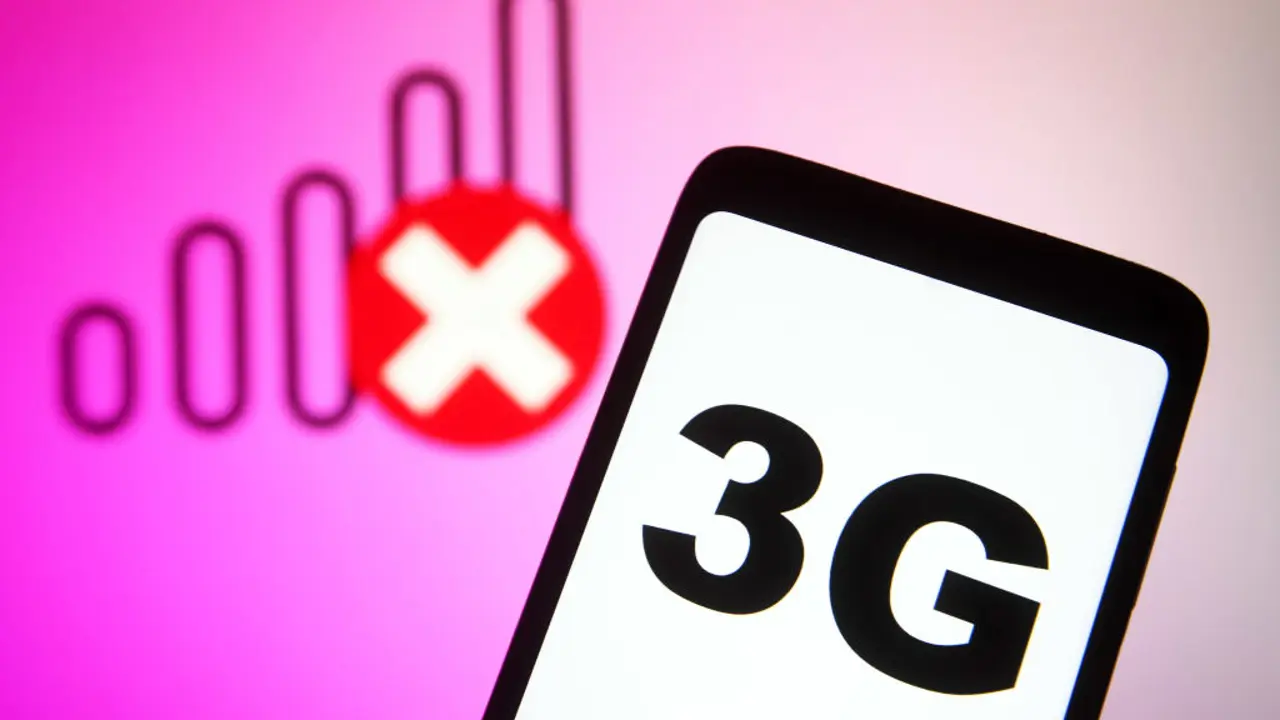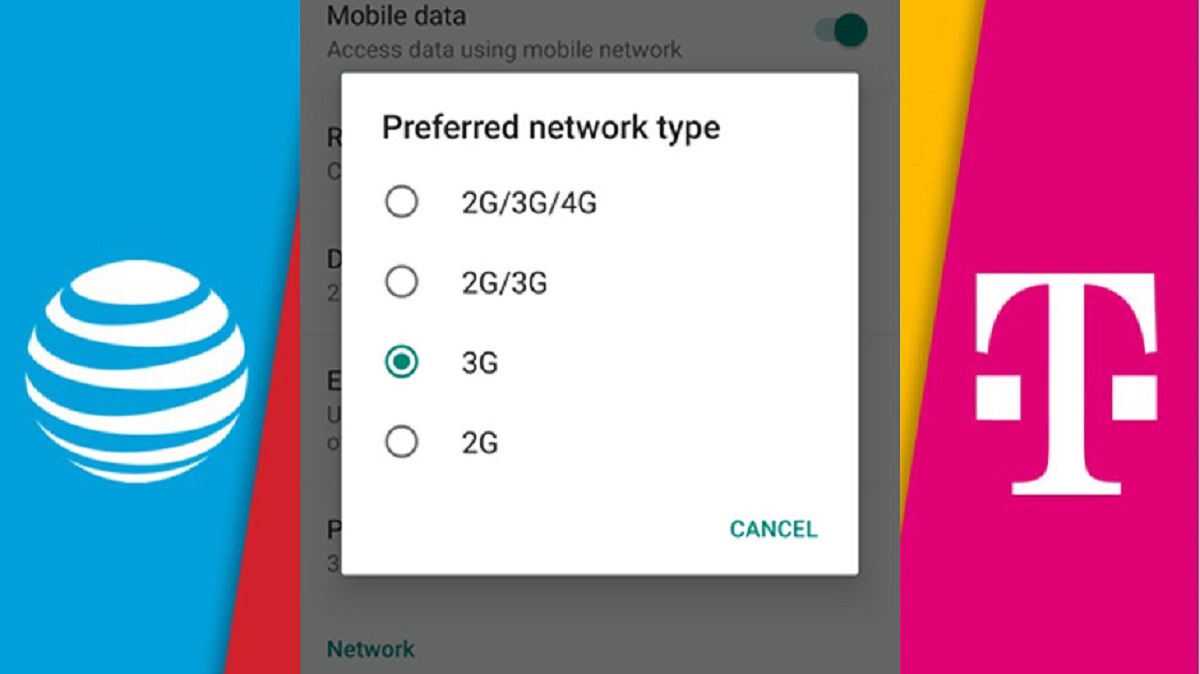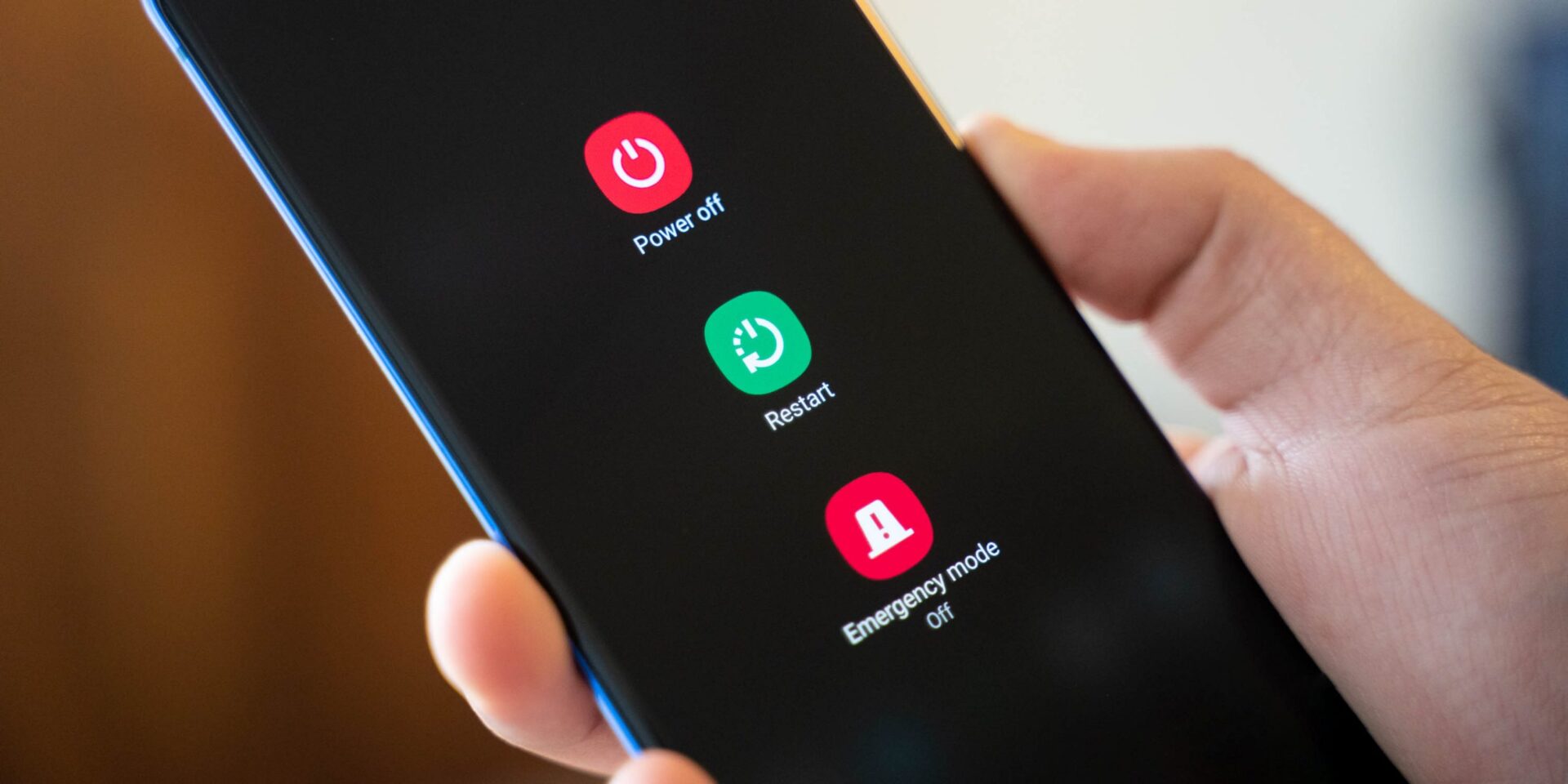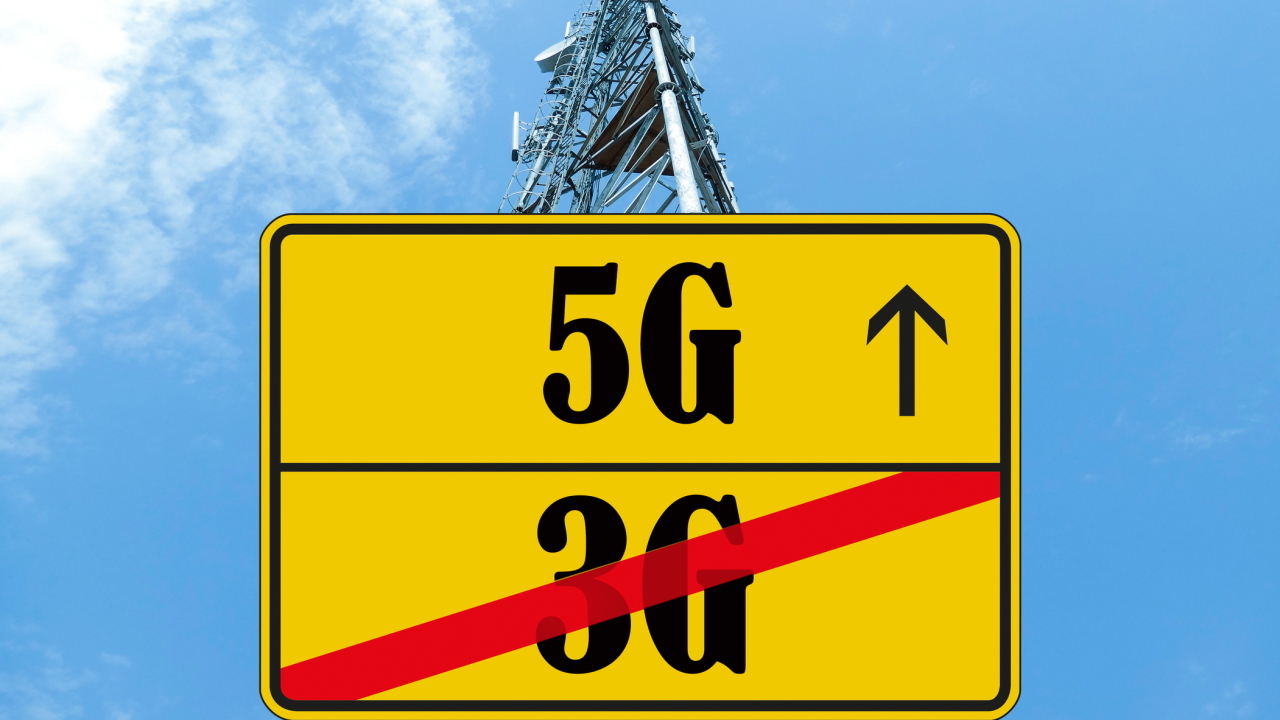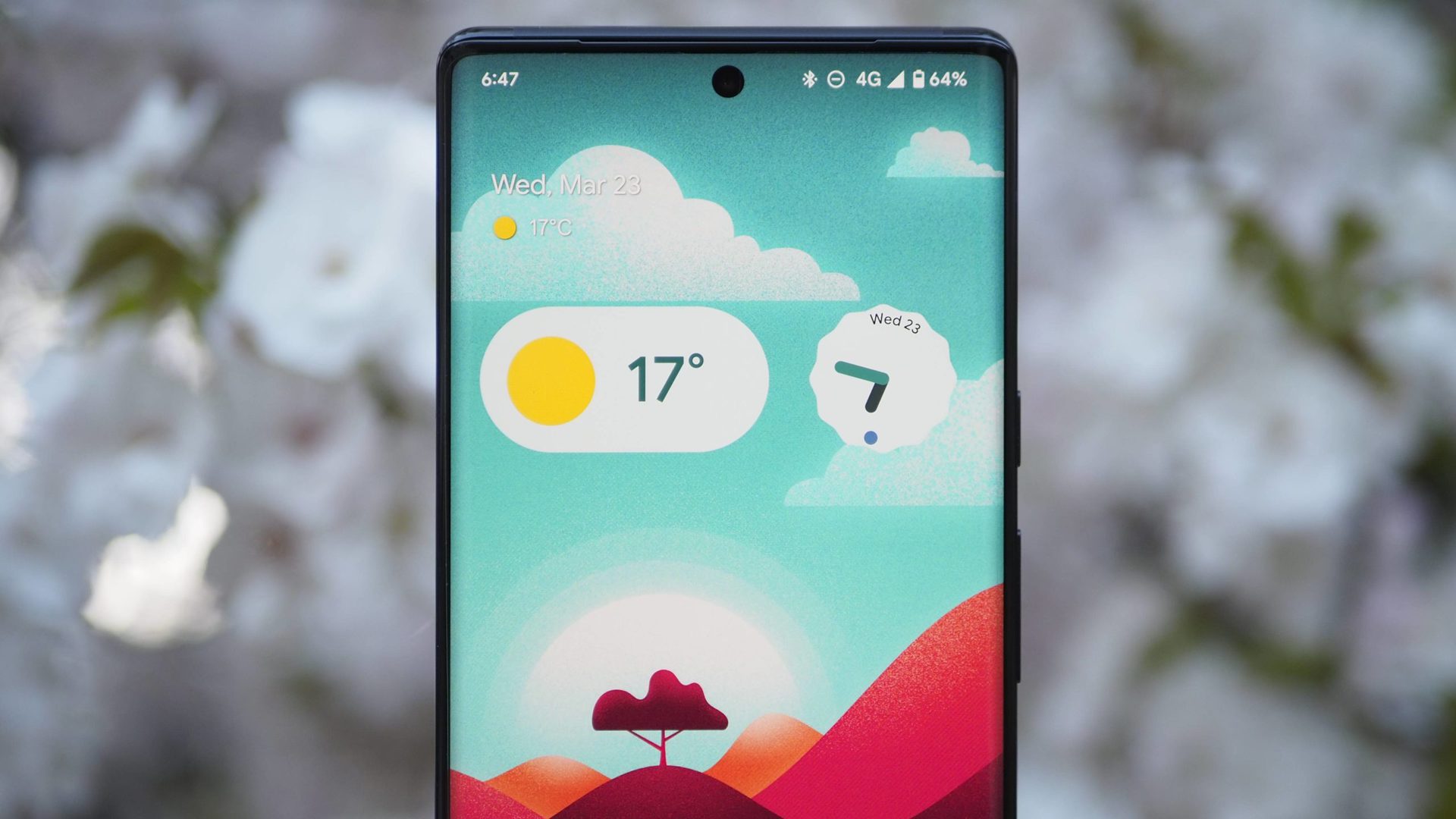Introduction
The rapidly evolving world of technology has propelled us into the era of advanced communication and connectivity. Over the past few decades, mobile network technology has undergone significant transformations, from the introduction of 2G to the widespread adoption of 3G, and now the emergence of 4G and 5G networks. As the telecommunications industry continues to innovate, it becomes necessary to adapt to the ever-changing landscape.
In this digital age, staying connected is more important than ever. With the advent of smartphones, our reliance on mobile data and internet services has become indispensable. However, as newer, more advanced networks are being introduced, older technologies are gradually being phased out. One such network that is reaching the end of its lifespan is 3G.
3G or third-generation technology revolutionized mobile communications in the early 2000s. It brought faster internet speeds, enabling us to browse the web, send emails, and access various online services on our mobile devices. Back then, it was a significant upgrade from the slower and less capable 2G networks. However, as the demand for faster data and improved network performance continues to grow, 3G is no longer able to keep up with our ever-increasing needs.
Major telecommunications companies, like AT&T, have recognized the need to adapt to the changing landscape of mobile connectivity. As a result, they have made the decision to shut down their 3G networks and focus on the more advanced 4G and 5G technologies. This move will not only enable them to provide faster and more reliable services but also free up valuable resources and spectrum for future innovations.
In this article, we will explore the reasons behind AT&T’s decision to shut down their 3G network, the impacts it may have on customers, and the benefits of transitioning to newer technologies. We will also provide a timeline for the shutdown and address some frequently asked questions about this significant transition. So, let’s delve into the world of mobile network technology and understand the implications of AT&T’s decision to bid farewell to 3G.
What is 3G?
3G, short for third-generation, refers to the third iteration of mobile network technology. It represented a significant leap forward in terms of data speeds and capabilities compared to the previous 2G networks. With 3G, users were able to access the internet, send and receive emails, and engage in video calls, among other data-intensive activities, on their mobile devices. It brought about a new era of mobile communication where the internet became accessible on the go.
One of the key features of 3G technology was its ability to deliver data at much higher speeds than its predecessor. While 2G networks primarily focused on voice calls and text messages, 3G enabled faster data transfer, allowing users to access websites, stream videos, and download files more efficiently. This boost in speed made it possible for users to have a more seamless browsing experience on their mobile devices.
In addition to faster data speeds, 3G networks were also designed to handle a greater volume of concurrent connections compared to earlier technologies. This increased capacity meant that more people could access the network simultaneously without experiencing significant slowdowns or interruptions. This was particularly beneficial in densely populated areas where network congestion was a common issue on 2G networks.
Furthermore, 3G technology introduced improved sound quality for voice calls, thanks to the use of digital codecs. This meant that users could enjoy clearer and more reliable voice communication when making calls on their mobile devices. Additionally, 3G networks facilitated the growth of various multimedia services, such as mobile TV and music streaming, as it provided the necessary bandwidth to deliver these content-rich experiences to users on the move.
Overall, 3G technology revolutionized mobile communications by providing faster data speeds, increased capacity, improved voice quality, and enabling a range of multimedia services. It played a pivotal role in shaping the way we use our mobile devices today. However, as technology continues to evolve at a rapid pace, the limitations of 3G have become more evident, leading to the shift towards newer and more advanced network technologies like 4G and 5G.
The shift to 4G and 5G
With the limitations of 3G becoming more apparent, the telecommunications industry has been actively working on the development and implementation of advanced network technologies like 4G and 5G. These technologies offer significant improvements in terms of data speeds, latency, capacity, and overall network performance, addressing the growing demands of today’s digital age.
4G, or fourth-generation, networks were a considerable leap forward from 3G. They introduced faster download and upload speeds, allowing users to stream high-definition videos, engage in video calls without major lags or disruptions, and experience significantly reduced network congestion. 4G networks also brought about notable advancements in areas such as voice over LTE (VoLTE), which significantly improved call quality and reliability.
Building upon the foundation of 4G, 5G technology is now emerging as the next frontier in mobile network innovation. 5G promises to deliver even faster speeds, lower latency, and higher capacity than its predecessors. It is expected to revolutionize various sectors, including healthcare, transportation, manufacturing, and entertainment, by enabling technologies such as autonomous vehicles, IoT devices, virtual reality, and much more.
One of the key differences between 5G and previous generations is the use of different frequency bands. While 3G and 4G primarily operated in lower frequency spectrums, 5G expands into higher frequency bands, allowing for greater bandwidth and faster data transmission. This high-frequency range, known as millimeter-wave (mmWave), enables 5G to achieve blazing-fast speeds and near-instantaneous response times.
Moreover, 5G networks bring significant improvements in terms of capacity and scalability, thanks to advanced network architecture and technologies like network slicing. Network slicing allows operators to divide their infrastructure into multiple virtual networks, each optimized for specific use cases, ensuring a more efficient allocation of resources and meeting the diverse requirements of different applications.
The shift to 4G and 5G networks reflects the industry’s commitment to meeting the ever-growing demand for faster and more reliable connectivity. These advanced network technologies not only enhance the user experience by enabling seamless multimedia streaming, gaming, and browsing but also open up doors to new innovations and transformative technologies that will shape our future.
AT&T’s announcement
AT&T, one of the leading telecommunications companies, has recently made an important announcement regarding the future of their 3G network. In order to stay at the forefront of mobile network technology and meet the growing demands of their customers, AT&T has decided to shut down their 3G network and shift their focus to the more advanced 4G and 5G technologies.
This decision comes as no surprise, as AT&T, like other major network operators, is continuously striving to enhance their network performance and deliver faster, more reliable services. By moving away from 3G, AT&T can reallocate valuable network resources, including spectrum, to support the latest technologies and provide an improved mobile experience for their customers.
AT&T has recognized that the demand for data-intensive activities, such as video streaming, online gaming, and cloud-based services, is increasing rapidly. These activities require faster data speeds and lower latency, which can be better accommodated by 4G and 5G networks. By shutting down their 3G network, AT&T can redirect resources towards expanding and optimizing their 4G and 5G infrastructure, ensuring that customers have access to the best possible network performance.
In addition to the technical advantages, shutting down 3G also allows AT&T to streamline their operations and reduce maintenance costs. Managing multiple older networks can be complex and costly, requiring ongoing maintenance and support. By focusing on newer technologies, AT&T can simplify their network infrastructure, leading to increased efficiency and cost savings in the long run.
AT&T’s announcement signals a bold step towards embracing the future of mobile connectivity. While this transition may require some adjustments from customers who are still using 3G devices, AT&T is committed to making the transition as smooth as possible. They are actively working on providing support and incentives to encourage customers to upgrade their devices to be compatible with their advanced networks.
Furthermore, AT&T has assured that their decision to shut down 3G will not leave customers without alternative options. They are actively working to ensure that customers who rely on 3G services, such as those using IoT devices or certain machine-to-machine applications, are not left in the lurch. AT&T is actively collaborating with these customers to migrate them to newer technologies that meet their specific needs.
Overall, AT&T’s announcement to shut down their 3G network is a strategic move to align with the evolving landscape of mobile network technology. It reflects their commitment to delivering faster, more reliable services and preparing their network for the future. By focusing on the advancements of 4G and 5G, AT&T aims to provide their customers with an enhanced mobile experience and ensure their network remains at the forefront of technological innovation.
Impacts on customers
AT&T’s decision to shut down their 3G network will have specific impacts on their customers. While this transition may require some adjustments, it is ultimately aimed at improving the overall network experience and providing access to faster and more reliable services. Here are some of the potential impacts that customers may experience:
- Device compatibility: Customers who are still using 3G-only devices will need to upgrade to 4G or 5G compatible devices to ensure continued access to mobile services. This can be an inconvenience for some customers who may need to invest in new devices, but it is a necessary step to take advantage of the benefits that the advanced network technologies offer.
- Improved network performance: The transition away from 3G allows AT&T to allocate more resources and bandwidth to 4G and 5G networks. This means customers will experience faster data speeds, reduced latency, and overall improved network performance. Activities such as video streaming, online gaming, and downloading large files will be more seamless and efficient.
- Expanded coverage: As AT&T invests in expanding their 4G and 5G networks, customers can expect to see broader coverage and improved signal strength in more areas. This means a more consistent and reliable mobile connection, whether in urban centers or rural communities.
- Support for new features and technologies: 4G and 5G networks bring a multitude of new features and technologies that customers can benefit from. These include enhanced voice quality with VoLTE, better video call capabilities, and support for emerging technologies like IoT devices and smart home automation. Customers will have access to an array of innovative services and applications that were not feasible with 3G technology.
- Migration support: AT&T is committed to supporting customers throughout the transition process. They are actively working on providing assistance and incentives to help customers upgrade their devices and migrate to the more advanced networks. Dedicated customer support and clear communication will be provided to ensure a smooth transition and address any concerns that arise.
Although the transition from 3G to 4G and 5G may involve some short-term inconveniences, the long-term benefits for customers are substantial. The improved network performance, expanded coverage, and access to innovative features and technologies will create a more seamless and enhanced mobile experience. AT&T is focused on minimizing disruptions and providing the necessary support to ensure a smooth transition for their valued customers.
Benefits of shutting down 3G
The decision by AT&T to shut down their 3G network brings several benefits, both for the company and its customers. This strategic move is driven by the need to advance network capabilities, improve efficiency, and deliver enhanced services to meet the evolving demands of the digital age. Here are some of the key benefits of shutting down 3G:
- Network optimization: By phasing out 3G, AT&T can reallocate valuable network resources, including spectrum, to support and optimize their 4G and 5G networks. This enables them to streamline their infrastructure and improve network performance, resulting in faster data speeds, reduced latency, and a more reliable mobile experience for customers.
- Cost savings: Managing multiple network technologies can be complex and expensive. By focusing on newer technologies like 4G and 5G, AT&T can simplify their network operations and reduce maintenance costs. This allows them to allocate resources more efficiently and invest in upgrading infrastructure to provide better services to their customers.
- Innovation and future-proofing: Transitioning away from 3G enables AT&T to stay at the forefront of mobile network technology and embrace future advancements. By investing in 4G and 5G technologies, AT&T can support emerging technologies and services, such as the Internet of Things (IoT), augmented reality (AR), and virtual reality (VR). This positions AT&T and their customers to take advantage of transformative technologies that will shape the future.
- Enhanced capacity: The retirement of 3G allows for the more efficient use of available spectrum. This increased capacity ensures that more users can connect simultaneously without experiencing significant network congestion. As a result, customers will enjoy better call quality, improved data speeds, and a more reliable network experience, even during peak usage periods.
- Support for newer devices and services: As 3G networks become obsolete, newer devices and services are designed to take advantage of the higher speeds and capabilities of 4G and 5G networks. By shutting down 3G, AT&T is facilitating the widespread adoption of these newer technologies, ensuring that customers can fully utilize the features and benefits offered by the latest devices and services in the market.
Overall, shutting down 3G brings numerous benefits for both AT&T and its customers. It enables AT&T to optimize their network, reduce costs, and future-proof their infrastructure, while customers can expect improved network performance, access to innovative services, and a better overall mobile experience. By embracing the advancements of 4G and 5G, AT&T is ensuring that its network remains at the forefront of technological innovation.
Timeline for the shutdown
AT&T has outlined a comprehensive timeline for the shutdown of their 3G network to facilitate a smooth transition for their customers. It is important for customers to be aware of these timelines to ensure they have ample time to adapt and make any necessary changes. Here is a breakdown of the timeline for the 3G shutdown:
- Announcement: AT&T has already made the official announcement of their plans to shut down their 3G network. This early notification allows customers to start preparing for the transition and understand the implications of the change.
- Device upgrade promotions: AT&T is offering promotions and incentives to encourage customers to upgrade their devices to ones that are compatible with 4G or 5G networks. These promotions may include discounted prices, trade-in options, or device installment plans, making it easier and more affordable for customers to make the necessary upgrades.
- Customer notifications: AT&T will proactively reach out to customers who are still using 3G devices to inform them about the upcoming shutdown. These notifications will be sent via various channels, including email, SMS, and through their customer service representatives. The notifications will provide information on the specific timeline and steps customers need to take to ensure a seamless transition to newer technologies.
- End of 3G device activation: At a specific date determined by AT&T, 3G devices will no longer be activated on the network. This means that customers will need to ensure they have their 4G or 5G compatible devices ready and activated before this date to avoid any service disruptions.
- Phase-out period: Following the end of 3G device activation, AT&T will begin phasing out their 3G network gradually. The specific timeline for the phase-out may vary by region, but AT&T aims to complete the process as efficiently as possible, minimizing the impact on customers.
- Full shutdown: Eventually, AT&T will complete the shutdown of their 3G network across all areas. After this point, 3G devices will no longer have access to any mobile services on the AT&T network. It is important for customers to have upgraded to compatible devices well before this full shutdown to avoid any service disruptions.
AT&T is committed to ensuring a smooth transition for their customers throughout this process. They will provide regular updates, reminders, and support to assist customers with the upgrade process and answer any questions or concerns. It is essential for customers to stay informed about the specific timelines relevant to their region and take appropriate steps to ensure they can continue enjoying the benefits of AT&T’s advanced 4G and 5G networks.
FAQs about the shutdown
As AT&T prepares to shut down their 3G network, customers may have several questions and concerns regarding the transition. To help address these, here are some frequently asked questions about the shutdown:
-
Q: When will AT&T shut down their 3G network?
AT&T has not announced an exact date for the full shutdown of their 3G network. However, they have provided early notifications to customers to allow for a smooth transition. Customers should stay updated with AT&T’s communications for specific timelines relevant to their region. -
Q: What happens if I still have a 3G device after the shutdown?
After the shutdown, 3G devices will no longer have access to mobile services on the AT&T network. It is important to upgrade to a 4G or 5G compatible device before the shutdown to avoid any service disruptions. -
Q: How can I check if my device is compatible with 4G or 5G?
You can check the device specifications or contact AT&T customer support to determine if your device is compatible with 4G or 5G networks. AT&T also offers an IMEI checker tool on their website, which allows you to verify device compatibility. -
Q: Will I need to purchase a new device if mine is not 4G or 5G compatible?
Yes, it will be necessary to upgrade to a device that is compatible with 4G or 5G networks. AT&T is offering promotions and incentives to make the device upgrade process more affordable and accessible for customers. -
Q: Will the shutdown of 3G affect my voice calls?
No, the shutdown of 3G will not affect voice calls as AT&T offers voice over LTE (VoLTE) on their 4G and 5G networks. VoLTE ensures high-quality voice calls over the data network, providing an improved calling experience. -
Q: How can I get support during the transition?
AT&T is committed to supporting customers throughout the shutdown transition. You can contact their customer support through various channels, including phone, live chat, and social media. They will provide guidance and assistance in upgrading your device and addressing any questions or concerns you may have.
It is important for customers to stay informed about the specific details and timelines provided by AT&T. Keeping an eye on their communications and reaching out to their customer support if needed will help ensure a smooth transition and minimize any potential disruptions to your mobile services.
Conclusion
The impending shutdown of AT&T’s 3G network marks a significant milestone in the evolution of mobile network technology. As AT&T redirects its focus towards the more advanced 4G and 5G technologies, it aims to provide customers with faster data speeds, improved network performance, and access to innovative services and applications.
The transition away from 3G brings several benefits for both AT&T and its customers. By optimizing their network, reducing costs, and embracing future-proof technologies, AT&T is positioning itself at the forefront of the telecommunications industry. Customers can look forward to enhanced network experiences, expanded coverage, and support for emerging devices and services that require the capabilities of 4G and 5G networks.
While the shutdown of 3G may require device upgrades and adjustments for some customers, AT&T is committed to making this transition as smooth as possible. They have provided ample notice, device upgrade promotions, and ongoing support to guide customers through the process. AT&T’s dedication to ensuring customer satisfaction during this transition is a testament to their commitment to delivering the best-in-class mobile services.
As the telecommunications landscape continues to evolve, the shutdown of 3G is a necessary step towards embracing the advancements of network technology. It paves the way for improved network performance, increased capacity, and the adoption of transformative innovations. AT&T’s decision to shut down their 3G network is a strategic move that heralds a new era of faster, more reliable, and future-proof mobile connectivity.
Customers are encouraged to stay informed about the specific timelines and steps provided by AT&T for the shutdown. By upgrading to 4G or 5G compatible devices and leveraging the benefits of these advanced network technologies, customers can ensure a seamless transition and enjoy the full advantages of AT&T’s advanced mobile services.







